The global market for corporate learning management systems was valued at $9.98 billion in 2023. It is projected to reach approximately $63.12 billion by 2033, growing at an annual rate of 20.24% from 2024 to 2033.
The number of people using online learning globally is steadily increasing as remote learning has become the norm. Approximately 98% of universities have partially or fully transitioned their classes online, contributing to this trend.
So, if you are considering venturing into learning management system development, now is the perfect time.
But how to build a learning management system (LMS) with custom functionality?
This step-by-step guide uses all our experience to help you build your own LMS from scratch. First, we’ll present you with the basics of learning management system development. Then, we’ll outline the cost of LMS development and the factors affecting it.
Sounds good? Let’s dive right in.
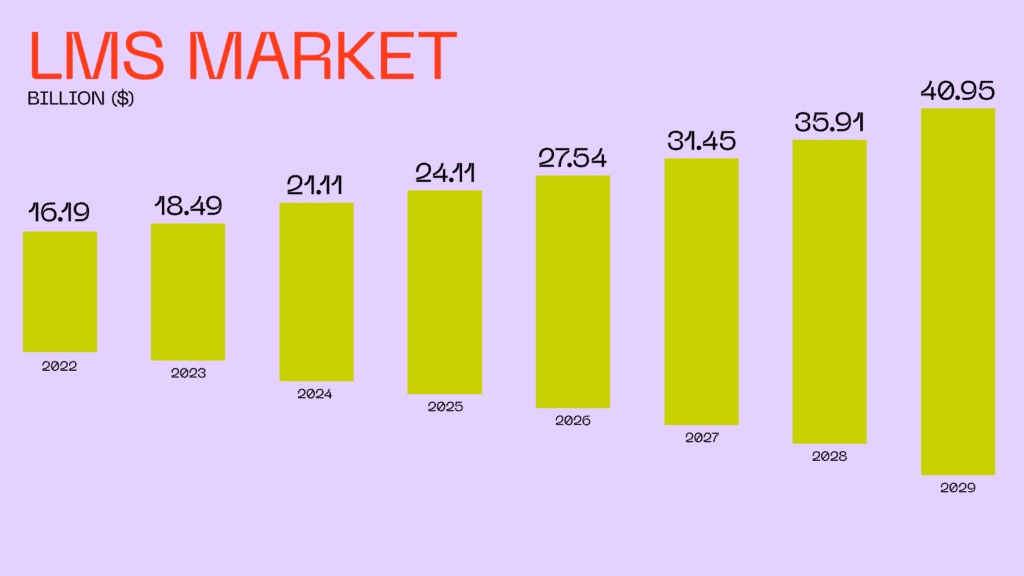
Types of learning management systems
Before we jump into discussing how to build a custom learning management system, let’s look into the main learning management systems types:
Open-source LMS
A free, open-source learning management system can be customized to any requirement. It also means you need a skilled technician for custom learning management system development out of free code. Reliable support may not be present, either.
Commercial LMS
Commercial learning management system software costs money and can only be customized by an owning company. For this reason, you, as a client, might lack some desired features. On the other hand, you get solid and continuous support.
Installed LMS
An installed or hosted LMS works on your premises and uses your own servers to store data. Therefore, it is highly secure and can be infinitely customized. However, you need an in-house server rack for installed LMS development and maintenance.
SaaS LMS
The software-as-a-service learning management system is hosted on the cloud and is maintained by the vendor. As a client, you pay a subscription fee and fully focus on training. There is little opportunity for customization, though. This might be the reason to build your own LMS system.
Integrated LMS
Learning management system development can involve integration with third-party apps. These can include social networks, calendars, talent management systems for HR functions support, email, and more.
Non-integrated LMS
Some LMS solutions can limit their functionality to the core features. The goal of these LMS types is merely to provide users with a single source of important information.
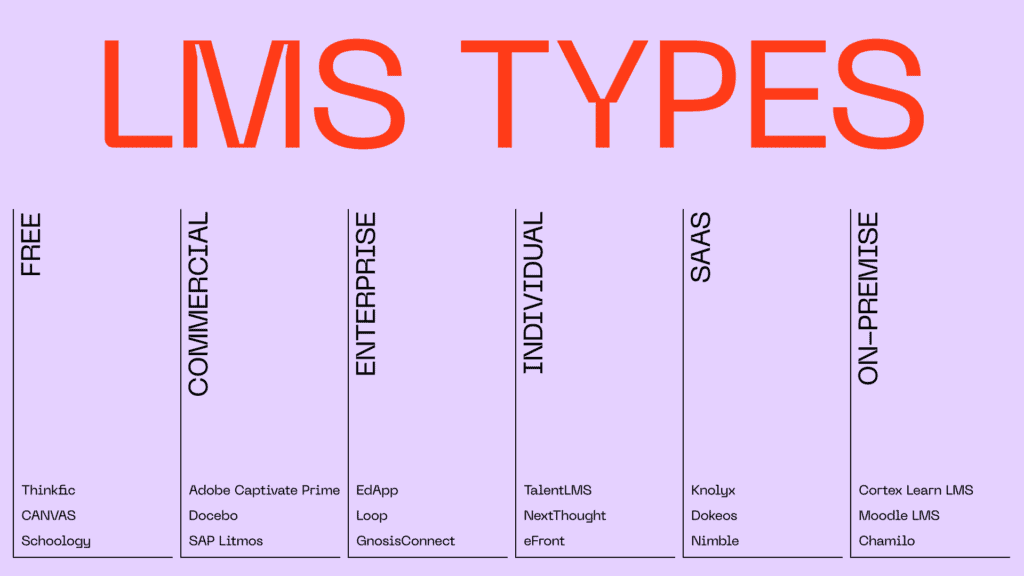
Have an idea for a custom LMS solution?
We make industry-leading software with functionality customized for your needs.
Get consultationLearning management system development from scratch
Now that we understand what an LMS is and have defined its basic types, we can start discovering how to build a custom learning management system. By following our step-by-step plan, you can avoid making widespread mistakes and create an LMS from scratch.
Step 1. Research the idea and plan the LMS development
In the US alone, about 20% of business ideas prove themselves unviable within the first year. To avoid unprofitable investments before creating a learning management system, you need to validate your idea. Here are the key steps to follow:
- Define the purpose of learning management system development. It can be customer training, employee onboarding, retention, salespeople preparation, general-purpose education, etc.
- Articulate the main problems your LMS is to solve. These may include: reducing training costs, cutting employee onboarding time, freeing up time, measuring learning impact, and others.
- Specify the available budget for LMS development and consider the costs involved. We’ll discuss LMS development costs and provide rough estimates below.
- Determine the target audience for your LMS project and choose the most appropriate LMS type for them.
- Think about your LMS monetization model – whether it will be freemium or paid.
Discovery phase of an LMS development project
To have a clear idea of how to build a LMS to look and function as requested, detailed planning is necessary. At Syndicode, we start the learning management system development with a discovery session. It helps us understand the market need and set the wireframes for development. The discovery phase involves the following steps:
- Collecting information. A project manager and business analyst analyze your business goals, needs, and vision. Then, they conduct market analysis to choose the most profitable niche and develop a learning management system strategy.
- Competitor research is an important part of the discovery phase as it allows us to understand what practices can be used as a base for development. Not reinventing the wheel speeds up the development process and lowers the LMS cost.
- Scope of work is determined based on your business model and requirements. We decide on the methodology and timeline.
- User stories list tasks you want the future LMS to perform. Developers use them to make technical specifications and the project plan.
- Architecture design. Your idea is shaped into a list of components and the principles of their interaction. You get a presentation of the future LMS and can prove the concept while developers identify the possible tech blockers.

After the discovery stage, you should understand what the learning management system development process will comprise and have a rough estimate of the time and costs. Next, we proceed to create a detailed project timeline and then build a prototype.
Step 2. Define the core features for learning management system development
How to create an LMS functionality plan. Well, the complete set of LMS features is up to your potential client’s needs.
Still, there are must-have features for creating a learning management system. Without them, an LMS won’t provide a good learning experience:
| Feature | Description |
|---|---|
User permissions | To ensure security, editors should be able to customize user access to certain information and system functions. |
| User management | For the continuous learning process, tutors should be able to group students, assign assignments to individuals and groups, send private messages, reminders, and such. |
| Data reports | An LMS should enable students to track their performance and evaluate their progress. Also, data like time spent on an assignment and overall results in a specific topic can give insights into course improvement. |
| Knowledge assessment | Tools for various assessment creation, like tests and quizzes, allow for estimating comprehension and retention. |
| Notifications | Through notifications and reminders, users can stay informed about new materials, deadlines, test results, feedback, etc. |
| Centralized materials for learning | An LMS should store learning materials in a convenient and user-friendly way. Centralized and organized information promotes learning consistency and increases engagement. |
| Course management | Along with a text editor, this feature allows users to create courses and manage the existing ones. |
Additional features to consider in learning management system development:
The following features are good to have in most learning management systems for business. Consider them if you’re going to build your own LMS:
| Feature | Description |
|---|---|
| Personalized UX | Receiving relevant content based on a learner’s history and role, one feels more invested in learning. Also, this feature ensures your learners have all the essential skills. Example: Evrlearn |
| Offline learning tracker | To track offline learning activities, an LMS can allow one to download content and manually edit one’s assessment checklists. Example: iSpring Learn |
| Compliance checker | For businesses that have to keep compliant with internal policies or governmental regulations, an LMS can ensure the right people are trained and assessed properly. Example: Trakstar |
| Smart scheduling | For one-to-one learning sessions, a smart scheduling tool can offer both parties the most comfortable dates and times. Example: Coursera |
| Gamification | Earning points and competing with other learners boost engagement and knowledge retention. Example: TalentLMS |
| Integrations | If you want to develop a learning management system that integrates with other software, you’ll need this feature. LMS can integrate with CRM, email, payment systems, and more. It removes the manual processes and simplifies training. Example: Blackboard Learn |
| White labeling | In systems intended for general use, you can allow users to add their logos and change dashboard colors to fit their branding. Example: SkyPrep |
Step 3. Choose the right tech stack
The proper technology stack is critical for creating a learning management system that is stable, smooth-running, and secure. At Syndicode, we choose a custom tech stack for LMS depending on its type and the required functionality.
A learning management system development involves the following technologies:
Backend
That’s where the LMS data is stored and processed. This learning management system software layer is invisible to the client, yet it is the backbone of the learning management system’s operation.
The popular frameworks for building an LMS backend are Django, Rails, Node.js, and others. At Syndicode, we rely on Ruby on Rails for custom learning management system development from scratch. It has many libraries that allow extra flexibility and help write code faster. It also comes with strong safety measures and is suitable for most industries.
Frontend
Frontend refers to everything a user can see and interact with within a product. To create an LMS platform interface, we use Vue.js or React.js. Depending on your requirements, we choose the technology that will give the desired appearance along with quick loading and high responsiveness.
Databases
Learning management systems are connected to relational databases such as PostgreSQL or MySQL. They are compliant, reliable, and fast. We use PostgreSQL as the most popular solution due to the huge number of functions.
Hosting
We find Amazon Web Services to be the perfect blend of security, productivity, and pricing for cloud-based learning management system development. Alternatively, DigitalOcean is a fast and reliable hosting service.
Below is an infographic briefly describing the commonly used technology for different stages of developing an LMS:
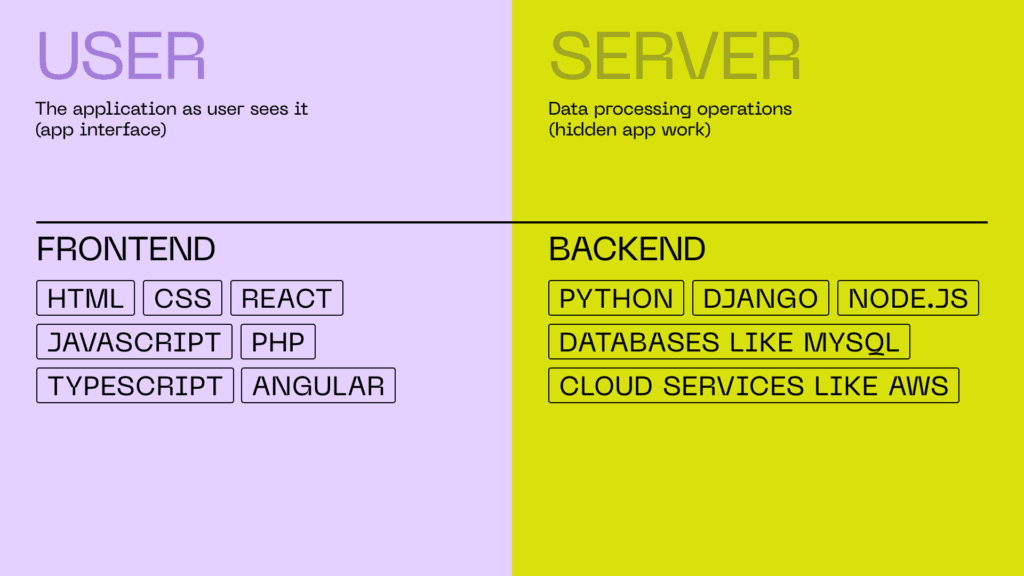
As seen from the infographic, to create an LMS from scratch, you’ll need many tools and programming languages. Our skilled technicians select the technology that can best fulfill your unique requirements.
Step 4. Create a learning management system specification and UI/UX design
Now that you understand the purpose of learning management system development and have balanced out the features list proceed to make a specification. This document extensively describes the goals and requirements for an LMS, as well as the ideas, features, and technologies for development.
If you have ever wondered how to create LMS specifications, you should hold a discovery session with our team. Syndicode project managers have strong technical and communication skills and expertise to formulate clear questions and derive all the essential information from the client. Also, at this step, the schematic representation of the future LMS is created, and costs are estimated.
After all the requirements are set and recorded on paper, designers visualize the future LMS. For complex architectures, they first create LMS mockups and wireframes. If everything looks good, they make UI and transfer it to developers to turn it into a functional product.
Step 5. Get a qualified LMS development team
A hand-picked in-house development team has some strong benefits, like full control and direct communication. These factors become increasingly crucial for the development of learning management systems as the project size and development time grow in size.
Yet, assembling an in-house development team takes substantial time for interviewing and training. It is also associated with higher costs than outsourcing since employing people is a long-term investment intended to fulfill a constant flow of tasks.
So, how to create an LMS if you don’t have an in-house team? For one-time projects, outsourcing can be a cost-effective option since you only pay for the work done without any long-term investment.
However, outsourcing comes with risks such as communication issues, lack of planning, and poor quality control. At Syndicode, we have honed processes, clear communication, pre-development business analysis, and repeated testing to prevent these issues. You can learn more about how to mitigate risks associated with outsourcing in this guide.
Looking to outsource your LMS development to a committed team?
Schedule a consultation with experts who completed 140+ software projects.
Book a callBenefits of outsourcing for LMS development
Some key advantages to outsourcing your learning management system development are:
- Easy team scaling
Depending on the task’s complexity and urgency, you can scale your LMS developers’ team up and down without any expenses in hiring or firing.
- Saving costs and time
Unlike an in-house team, working with an outsource software development company saves you from worrying about the workspace and equipment or staff training.
You can also check the potential tech partner’s expertise in creating similar software to the LMS you want. This ensures a faster development process and reduced expenses.
- Established development process
Experienced development teams use tested practices and have established routines and processes. Moreover, the team members know each other well and have worked on dozens of projects together. Experience and the absence of communication roadblocks make development faster and cheaper.
- Reduced risks
Your tech partner funds the learning management system development process while you, as a client, pay for the received value. This makes the outsourced company equally interested in timely and effective work.
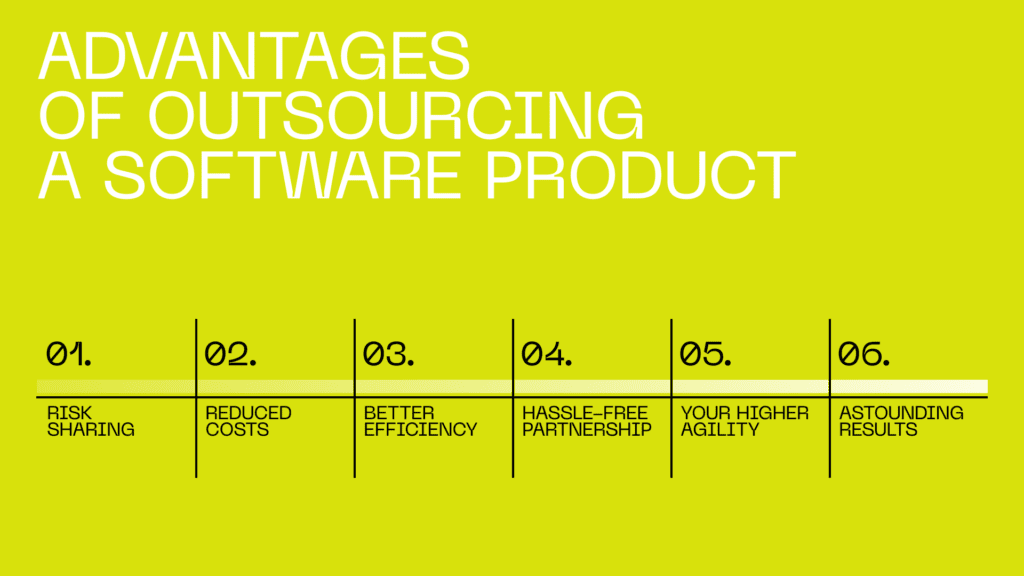
Step 6. Build the first version of your learning management system
When it comes to learning management system development, an iterative approach to releasing is recommended. Here’s how to build a learning management system with complex functionality in a short time-to-market:
- The Syndicode team evaluates the full list of LMS functions discussed during the discovery stage.
- The most essential features are chosen, confirmed with the client, and implemented into the first version of the LMS.
- Second-priority functions are added to the updated version, and so on until all the necessary features are integrated.
This approach allows for the development of a functional product in a short time, enabling the client to start getting profit from their LMS as soon as the development process begins, regardless of project size.
Additionally, if the client wants to test the market response to the new LMS, an MVP (minimum viable product) can be developed. It’s important to note that an MVP cannot be tested on a wide audience, but it can help understand whether the chosen functionality meets demand and if customers will pay for it.
Step 7. Create the final product
When it comes to learning management system development, we follow an established workflow for each new release:
- First, there is a kick-off session where developers get familiar with specifications and the design to create an LMS feature.
- Discussions are held to determine the most appropriate solutions and prioritize tasks.
- We go back to user stories, decide how best to integrate the new feature into the LMS architecture and determine how it will be tested.
- The result of the discussions is presented to the client for approval.
- For both full LMS development and separate feature building, we follow the project timeline that specifies what needs to be done and who will work on each task. Milestones and demonstrations are also indicated there.
- To ensure maximum efficiency, we break the work into sprints that involve planning, task execution, evaluation, and analysis.
- To keep track of the work done and issues faced, we hold daily and weekly meetings.
- The client joins our team for a demo session at the end of a sprint to ensure that the development is on the right track and there will be no need for major fixes at the release.
- To ensure the proper performance of the newly built learning management system, we do a series of manual and automated tests. The same process applies to each new version of the LMS.
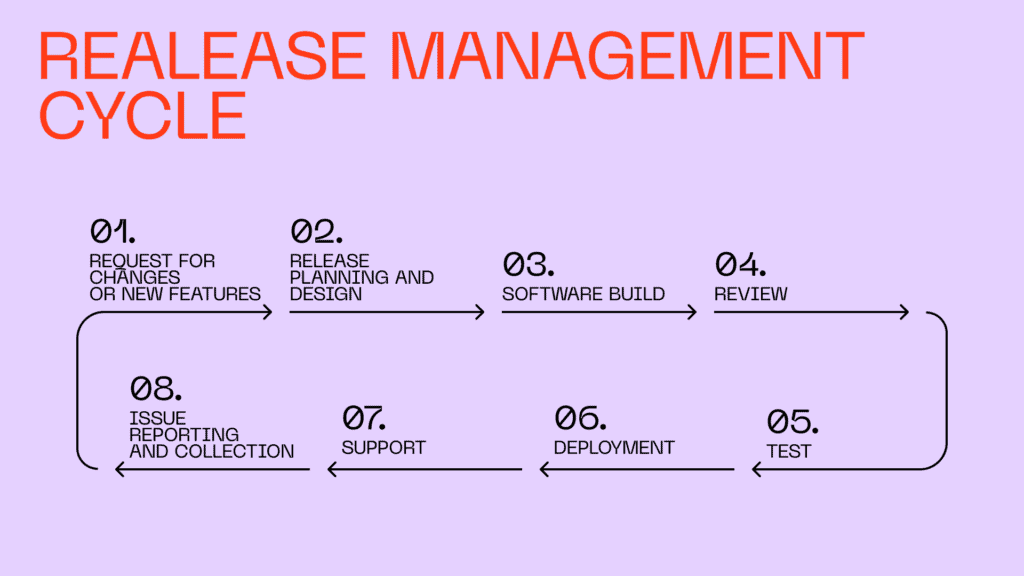
Step 8. LMS rollout and maintenance
As soon as the testing proves every feature works as requested by the client, the code is deployed. To prevent delays, we follow the systems development life cycle (SDLC) method. Also, before the big day, the Syndicode team prepares a detailed description of the LMS features and how to operate them.
As the learning management system development is over and the LMS already running, we offer corrective and perfective maintenance services. As you monitor the LMS performance and collect user feedback, you can request fixes and/or changes.
Cost of learning management system development
It’s impossible to name an exact custom learning management system cost since it depends on many factors. But to give you some reference, let’s say MVP development for an average web-based LMS takes around four months. The average contractor rate for Eastern Europe (Czech Republic, Hungary, Latvia, Lithuania, Poland, etc.) is between $40 and $70 per hour.
Taking a standard team with a business analyst, project manager, team lead, two or three developers, a designer, and a QA, you can expect to get a minimum viable product for an LMS for about $150K-300K.
For comparison, developers from Western Europe (Belgium, Germany, France, Netherlands) charge around $60-90 per hour, while US contractors’ price tag is $100-200 per hour. So, the MVP price range will grow correspondingly.
Average estimated cost of LMS Development
| Country | Eastern Europe | Western Europe | USA |
|---|---|---|---|
| MVP (one platform) | $150K-$300K | $220K–$450K | $375K–$750K |
| Full product (basic functionality for one platform) | $200K–$450K | $300K–$650K | $500K–$1.5M |
What can affect the cost of developing an LMS?
Aside from the actual coding, developing a learning management system can involve additional items. They all influence the final cost of development:
- Hosting. An LMS should be published on a hosting site to be available for users. Fees vary from $5 to $500 per month and more. Depending on the quantity of stored media content, you may also need a bigger repository that costs extra;
- Third-party services integration. If you want to connect your LMS to Amazon, Grammarly, or other services, it may cost extra;
- Specific compliance standards. If your LMS needs to meet data privacy regulations (e.g., GDPR) or accessibility requirements (e.g., WCAG), development costs can increase as more security measures must be implemented.
- Multilingual and localization support. Localization efforts can add to the development costs if you intend to offer your LMS in multiple languages or cater to different regions. This includes translating content, adapting the user interface, and considering cultural differences.
- Advanced features. Gamification, social learning, analytics, assessment tools, content authoring, and mobile compatibility may require additional development effort.
- Scalability. If you anticipate many users or plan to scale your LMS in the future, the development costs may increase. A scalable architecture that can handle high user volumes and performance requirements often requires additional development and infrastructure expenses.
Final words
If you’re interested in creating your own learning management system and want complete control over its features, custom learning management system development is the way to go. Outsourcing the development process can lower the risks of building a custom LMS and getting a high-quality product even with limited resources.
At Syndicode, we believe that the key to successful custom LMS development is a streamlined process and a knowledgeable team. Our approach ensures that you stay informed about the development process and have the opportunity to provide input throughout.
We recently completed a project in the e-learning marketplace space called Evrlearn, where we developed a commercial marketplace from the ground up. Our platform includes an instant search feature powered by Elasticsearch technology, which we further enhanced with machine learning capabilities. With Syndicode, you can be confident in the quality and effectiveness of your custom learning management system.
Frequently Asked Questions
-
How to launch a learning management system?
Briefly, launching a learning management system takes five steps: 1. Plan your content. To ensure your training content is valuable, analyze the learners’ needs. Then, review your existing content to see if it needs to be updated or improved. Find the balance between enough content to make people interested and a realistic amount your team can quickly produce. 2. Create an introduction to the LMS. Spread the word about your new tool and set expectations. Be creative in this to recruit as many users as possible. 3. Build an LMS support team. The early days of an LMS will likely involve onboarding and associated support requests. Decide who will provide technical and learning support and provide contact channels. 4. Use a soft launch. Before going full live, consider testing your new LMS on a small group of people. This way, you’ll discover all sorts of small things that would otherwise go unnoticed – and fix them. 5. Plan user training. Every new learning management system software has some kind of a learning curve. Schedule a few meetings to help people to get started. That will eliminate barriers and improve engagement.
-
Why is LMS important?
There are quite a few benefits to using a learning management system: An LMS organizes all informational content in a single location, making it easy to find. All users can access files in the LMS anytime. Thus they can learn anytime they find convenient, without having to wait for the next training session. An LMS tracks users’ performance and progress. Thus, as an employer, you can be sure that all employees are meeting their training milestones. Also, you can spot the areas in need of improvement, for example, when many users are struggling with a particular course. Additionally, you can offer supplemental courses to improve one’s performance based on their learning achievements. An LMS reduces learning time since the material is delivered in an organized and direct manner. Interactive items like quizzes further stimulate knowledge retention. An LMS keeps organizations compliant. Making updates to compliance documents in an LMS sends notifications to users. Thus, they never miss important training.
-
How long does it take to build an LMS?
Learning management system development times vary depending on the functionality, architecture complexity, and development team’s location. Generally, a simple LMS with basic features will take around 4-6 months to develop. This includes the discovery session, business analysis, design, building functionalities, and testing.
-
Why choose Syndicode for LMS development?
Syndicode is a full-cycle custom LMS development company. Since 2014, we have completed dozens of development projects. In total, our clients have attracted over $400M investments. All our software proved profitable for our clients and got us 100% of positive reviews on Clutch. Thanks to us, our clients meet their obligations made to investors, discover new growth opportunities, improve performance, save up to 60% of budget compared to UK and US prices, and much more. Also, our software has a short payback period, in some cases up to one year. We have established tested routines to hold effective discovery sessions. That means we will quickly get to the heart of your problem and come up with a technically-smart solution to build a custom learning management system. We emphasize transparency and collaboration. As a client, you keep close tabs on the web development process and step in with timely suggestions or changes. Due to this approach, you can expect us to build your own LMS quickly and minimize the need for post-production fixes.
-
What kind of businesses need an LMS?
LMSs are highly versatile, and custom software development allows them to be adapted to any requirement and business sector. Primarily, schools, universities, and online education platforms are major users of LMS, as it helps them create and manage structured learning environments for students. However, companies across various industries also use LMSs for corporate training and employee onboarding. They are particularly crucial for businesses that prioritize continuous and compliance training, such as those in finance, healthcare, and IT sectors.
